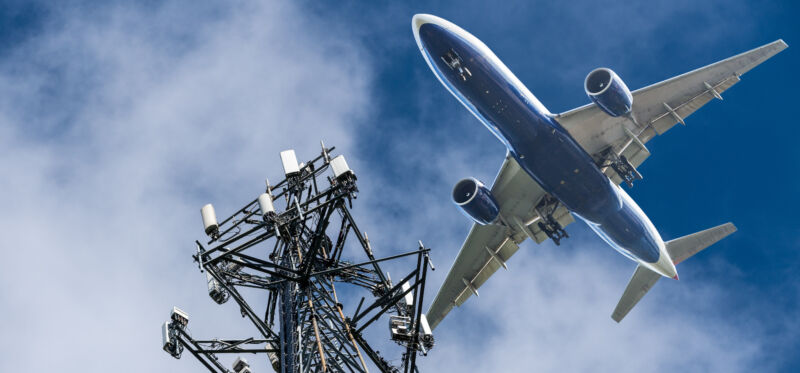
The Federal Communications Commission is considering issuing new rules for wireless receivers that could prevent future conflicts like the one between the aviation and cellular industries.
Rules require wireless devices to transmit in their licensed frequencies. That means that the transmissions in the C-band have to stay within it.
There isn't much that can be done to prevent devices from receiving transmissions outside their allotted frequencies. The Federal Aviation Administration has said that 5G transmissions in the C-band could interfere with the operation of some of the altimeters used in airplanes.
If an altimeter is affected by 5G, it means it is receiving transmissions from the wrong spectrum band. The 220 MHz guard band is 400 MHz in practice this year because AT&T and Verizon have not yet deployed above 3.8 GHz, but the FAA still says the current level of transmissions can interfere with some altimeters. The FAA has not been worried about the satellite transmissions between 4.0 and 4.2 GHz.
The FCC needs to get tough on wireless receivers, said FCC Chairwoman Jessica Rosenworcel in a speech Tuesday at Mobile World Congress. Airplane altimeters were not mentioned, but Rosenworcel explained that faulty receiver that cannot avoid transmissions from other spectrum bands can prevent new services in unused frequencies.
She continued.
In the past, our discussions of spectrum efficiency have been a one-way effort. They have focused almost exclusively on transmitters. We've put a lot rules in place about how and when transmitters can operate in order to control interference levels. But here's the thing: Wireless communications only exists when transmitters are connected to receivers. Both are vital. Both matter. And going forward policymakers need to consider both transmitting and receiving. Not just the former at the expense of the latter.
That's because minimally performing receivers can make it more difficult to introduce new services in the same or nearby frequencies. They can diminish broader opportunities with radio-frequency and put constraints on what is possible in the new wireless world.
The notice of inquiry would ask for public input on possible solutions, including new regulatory requirements.
She went on.
This inquiry would ask how receiver improvements could provide greater opportunities for access to spectrum. It would explore how these specifications could come in the form of incentives, guidelines, or regulatory requirements—in specific frequency bands or across all bands. And it would seek comment on legal authority and market-based mechanisms that could help create a more transparent and predictable radio-frequency environment for all spectrum users—new and old.
The proposal will be made in April. The Democratic chair of the FCC has bipartisan support. Republican Commissioner Nathan Simington was thanked for his leadership and willingness to work with him on a path forward.
Simington issued a statement applauding the decision to explore a new regulatory framework for commercial spectrum allocations.
An approach that looks at both the receiver and transmitter ends of the equation is the only framework truly capable of timely accommodating the interests of federal users of spectrum, and other incumbents. We see a lot of value in getting to a place where conflicts such as the C-band/altimeter fight are headed off at the pass.
This model will provide all interested parties sufficient advanced warning about problematic band edges adjacent to any new commercial spectrum. Clear rights regarding interference protection can provide incentives for innovation and collaboration among spectrum users in a way that avoids regulatory dictate.
When the FCC voted to allow cellular transmissions in the C-band in February 2020, the commission adopted power limits and the 220 MHz guard band between 5G and altimeters.
The FCC found no evidence of interference, but urged the aviation industry to conduct more testing. The FAA and aviation industry were not prepared for the 5G transmissions when they happened almost two years later.